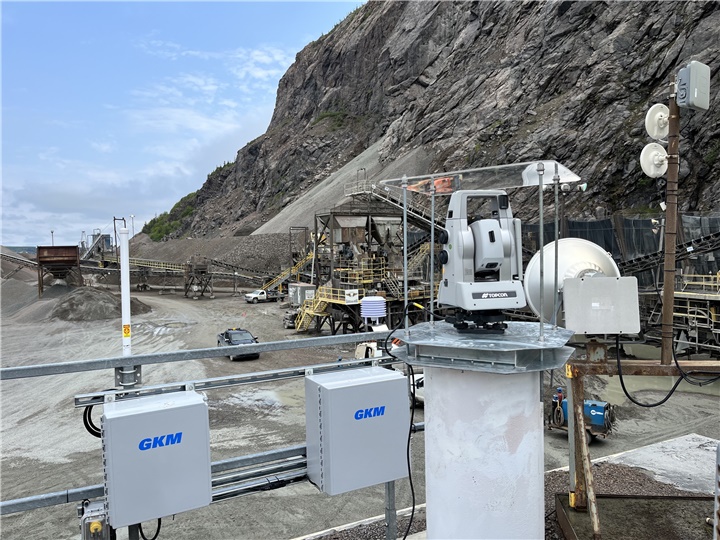Remote Rock Slope Monitoring
GKM was commissioned to set up an automated remote monitoring system to track the stability of a rock slope from a mountain exploited for the production of crushed stones for construction aggregates.
The mountain on the continental side is 1385m long and has a 244m wide base, resting 65m under water at its deepest point. Since it was first exploited in 1950, the quarry has produced some 10 million tonnes of rock fill, which was transported to the transshipment dock.
The hundred-meter-high rock face on the mountainside is fractured. Boulders are threatening to fall on the quarry facilities, which are partly located at the foot of the cliff to load the aggregate ships.
GKM Consultants was commissioned to set up an automated monitoring system using Automated Motorized Total Stations (AMTS) and Geokon vibrating rope displacement sensors coupled with a Loadsensing star wireless monitoring system.
The AMTS system is an innovation that revolutionizes the way slope stability is monitored and analyzed. This advanced technology uses robotized total stations and sensors to monitor ground movements and structural deformations with exceptional precision. Mountain projects involve strategically placing these stations at key observation points to monitor minute changes in slope geometry.
The fissurometer model 4420 is designed to measure movement between two plots. The ends of the sensor are attached to bolted (ball-jointed) anchors on opposite faces to allow measurement of any displacement.
The Loadsensing star wireless monitoring system acts as a data acquisition, detection and warning system. This long-range system incorporates a long-range, low-power radio. The system is based on a node-portal architecture. The instruments are directly connected to automatic wireless data loggers (nodes) which perform the acquisition and transfer the data over long distances to the portal, where all data is centralized and accessible.
A team of rope access technicians helped us deploy the system, installing the displacement sensors and nodes to measure critical crack movements, as well as the control prisms installed on sensitive points of the cliff.
Installing a total station in this environment was no easy task. Piles of material and construction machinery are constantly moving, and can obstruct the lines of sight to the targets to be measured. In addition, the constant dust and vibrations around the conveyor belts made it difficult to obtain a stable network.
However, we were able to set up a reliable and accurate automatic monitoring system, with real-time remote data management and visualization. Automatic alarms are configured to warn of any movement on the rock face.


